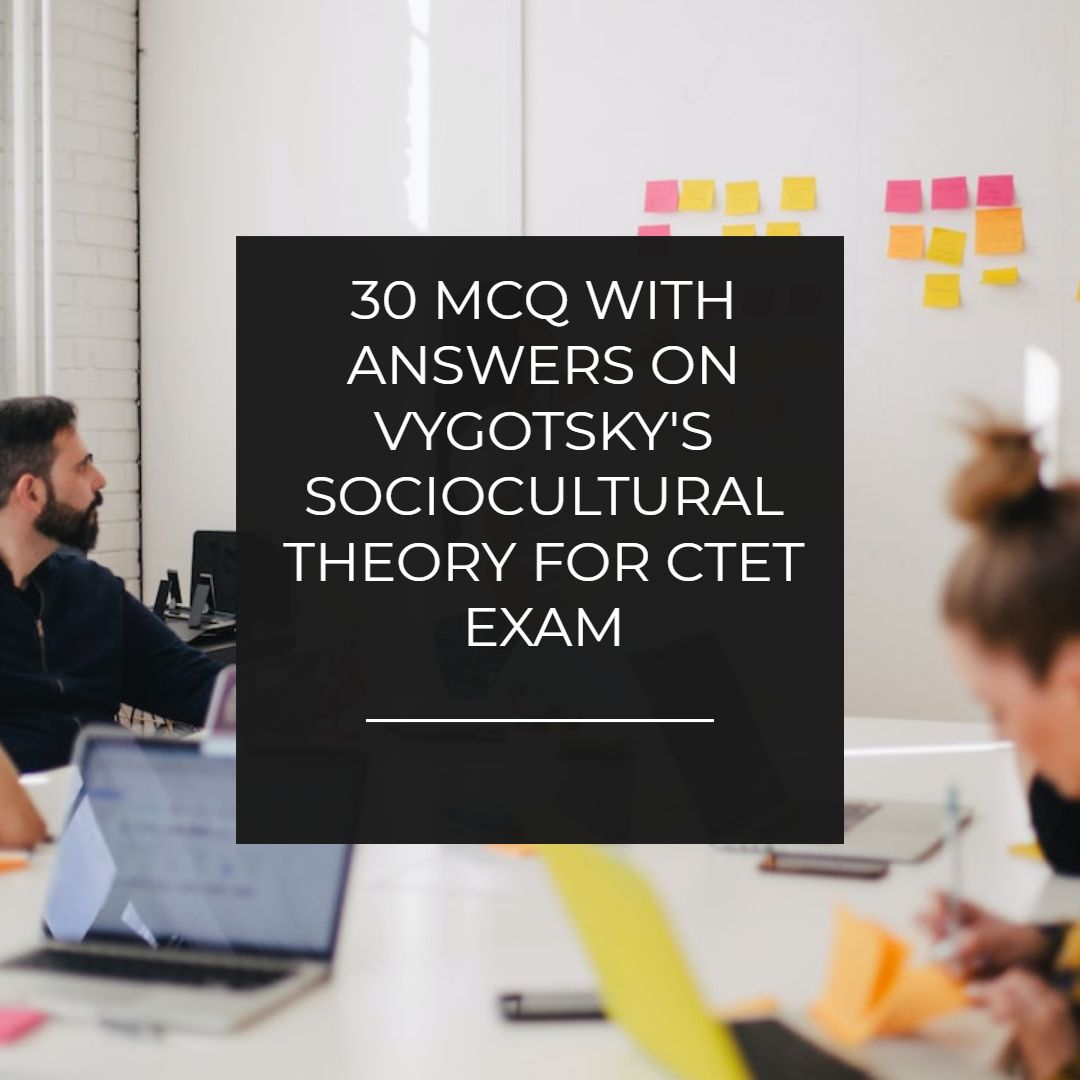20 MCQ with answers on Assessment and evaluation techniques (formative and summative)
20 MCQ with answers on Assessment and evaluation techniques (formative and summative) for ctet exam
Certainly! Here are 20 multiple-choice questions with answers on assessment and evaluation techniques (formative and summative) for the CTET (Central Teacher Eligibility Test) exam:
-
Formative assessment is best described as:
a) Assessing students at the end of a learning unit
b) Assessing students throughout the learning process
c) Assessing students’ overall performance
d) Assessing students’ long-term retention of knowledge
Answer: b) Assessing students throughout the learning process -
Which of the following is an example of a formative assessment technique?
a) Final exams
b) Standardized tests
c) Classroom observations
d) End-of-year evaluations
Answer: c) Classroom observations -
What is the primary purpose of formative assessment?
a) To assign grades to students
b) To assess students’ mastery of content
c) To provide feedback and guide instruction
d) To compare students’ performance to a standard
Answer: c) To provide feedback and guide instruction -
Summative assessment is best described as:
a) Assessing students throughout the learning process
b) Assessing students’ overall performance
c) Assessing students’ long-term retention of knowledge
d) Assessing students’ ability to apply knowledge in real-life situations
Answer: b) Assessing students’ overall performance -
Which of the following is an example of a summative assessment technique?
a) Quizzes during a unit of study
b) Classroom discussions
c) Final exams
d) Peer assessments
Answer: c) Final exams -
What is the primary purpose of summative assessment?
a) To provide feedback and guide instruction
b) To assess students’ mastery of content
c) To encourage student self-reflection
d) To monitor students’ progress over time
Answer: b) To assess students’ mastery of content -
Which of the following is a characteristic of formative assessment?
a) Occurs at the end of a learning unit
b) Measures students’ overall achievement
c) Provides immediate feedback to students
d) Determines grades or rankings
Answer: c) Provides immediate feedback to students -
Which of the following is a characteristic of summative assessment?
a) Occurs throughout the learning process
b) Measures students’ progress and growth
c) Guides instruction and learning activities
d) Determines grades or rankings
Answer: d) Determines grades or rankings -
An ongoing dialogue between the teacher and the student during the learning process is a characteristic of:
a) Formative assessment
b) Summative assessment
c) Diagnostic assessment
d) Norm-referenced assessment
Answer: a) Formative assessment -
An end-of-year evaluation that determines promotion to the next grade is an example of:
a) Formative assessment
b) Summative assessment
c) Diagnostic assessment
d) Criterion-referenced assessment
Answer: b) Summative assessment -
Which of the following is an advantage of formative assessment?
a) Provides a comprehensive view of students’ performance
b) Guides instructional decisions and interventions
c) Allows for comparison among students
d) Measures long-term retention of knowledge
Answer: b) Guides instructional decisions and interventions -
Which of the following is an advantage of summative assessment?
a) Provides immediate feedback to students
b) Allows for ongoing monitoring of student progress
c) Guides instructional decisions and interventionsd) Determines students’ readiness for future learning
Answer: d) Determines students’ readiness for future learning -
Which assessment technique focuses on identifying students’ strengths, weaknesses, and learning needs?
a) Formative assessment
b) Summative assessment
c) Diagnostic assessment
d) Criterion-referenced assessment
Answer: c) Diagnostic assessment -
Which assessment technique compares a student’s performance to a predetermined standard or criteria?
a) Formative assessment
b) Summative assessment
c) Diagnostic assessment
d) Norm-referenced assessment
Answer: d) Norm-referenced assessment -
Which assessment technique focuses on measuring students’ achievement relative to their own progress and growth?
a) Formative assessment
b) Summative assessment
c) Diagnostic assessment
d) Criterion-referenced assessment
Answer: d) Criterion-referenced assessment -
An assessment that measures students’ ability to apply their knowledge and skills in real-life situations is an example of:
a) Formative assessment
b) Summative assessment
c) Performance assessment
d) Portfolio assessment
Answer: c) Performance assessment -
Which assessment technique involves students creating a collection of their work to demonstrate their progress and achievements?
a) Formative assessment
b) Summative assessment
c) Performance assessment
d) Portfolio assessment
Answer: d) Portfolio assessment -
A teacher uses a rubric to assess students’ written essays. This is an example of:
a) Formative assessment
b) Summative assessment
c) Performance assessment
d) Analytic assessment
Answer: d) Analytic assessment -
Which assessment technique involves students working together to solve a problem or complete a task?
a) Formative assessment
b) Summative assessment
c) Collaborative assessment
d) Group assessment
Answer: c) Collaborative assessment -
An assessment technique that allows students to demonstrate their knowledge through oral presentations or performances is called:
a) Formative assessment
b) Summative assessment
c) Authentic assessment
d) Individual assessment
Answer: c) Authentic assessment
I hope these MCQs assist you in your CTET exam preparation! Best of luck!



